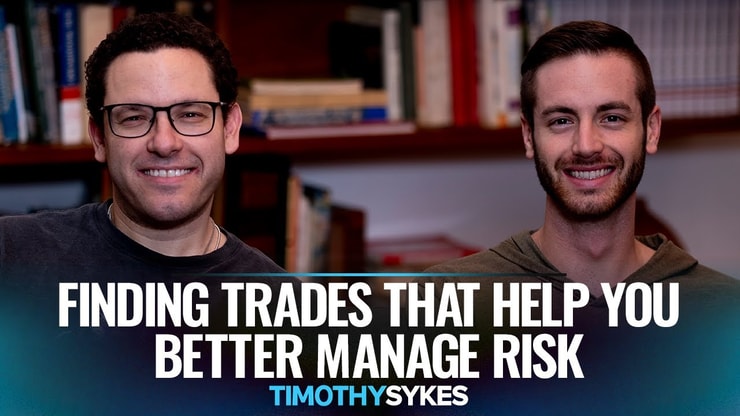Arbitrage trading exploits price discrepancies across different markets or financial instruments, aiming to profit from the price differences without assuming significant risk. This strategy, rooted deeply in financial markets, thrives on inefficiencies—providing traders a way to secure returns through a practice that relies more on mathematical certainty than market speculation. Here, we’ll explore a variety of arbitrage strategies that illustrate the breadth and depth of this approach.
We’ll get into the following strategies:
- Pure Arbitrage
- Retail Arbitrage
- Risk Arbitrage
- Convertible Arbitrage
- Merger Arbitrage
- Dividend Arbitrage
- Futures Arbitrage
Let’s get to the content!
Table of Contents
What Is Arbitrage?

Arbitrage in financial terms refers to the simultaneous purchase and sale of an asset to profit from a difference in the price. It is a trade that profits by exploiting the price differences of identical or similar financial instruments on different markets or in different forms.
- Arbitrage involves taking advantage of price discrepancies.
- It typically requires a high level of market access and capital.
- Speed and timing are crucial due to the competitive nature of these opportunities.
How Arbitraging Works
- Identify a significant price discrepancy across different markets or forms.
- Purchase the asset at the lower price while simultaneously selling it at the higher price.
- The profit is the difference between the buying and selling prices minus transaction costs.
Requirements for successful arbitrage include:
- High-speed trading systems
- Access to comprehensive market data
- Sufficient liquidity to execute trades simultaneously
While arbitraging fundamentally involves exploiting price discrepancies, understanding market signals is still crucial. The ADX (Average Directional Index) indicator can enhance this by highlighting the strength of price movements, aiding in the decision-making process when engaging in arbitrage. This tool helps arbitrageurs determine when a market is trending strongly enough to justify the risk of entry. For a comprehensive breakdown of how to integrate the ADX into your arbitrage strategy, check out our guide on ADX Indicator Strategy.
httpv://www.youtube.com/watch?v=shorts/-rOggLy1c_A
Types of Arbitrage and How to Trade Them
Arbitrage strategies vary widely, each catering to specific market conditions and asset types. Each strategy not only exploits market inefficiencies but also reflects the diverse landscape of trading opportunities available to those with the right tools and insights.
Here are the major types:
- Pure Arbitrage
- Retail Arbitrage
- Risk Arbitrage
- Convertible Arbitrage
- Merger Arbitrage
- Dividend Arbitrage
- Futures Arbitrage
Pure Arbitrage
Pure arbitrage finds its foundation in the price discrepancies of identical assets. Such opportunities are highly sought after and are rare in modern markets due to advanced technology and rapid information dissemination.
- Highly competitive and rare
- Requires significant technological resources
How to Trade Pure Arbitrage
- Monitor multiple markets for price discrepancies using advanced algorithms.
- Execute simultaneous buy-sell orders when discrepancies are detected.
- Continually adjust strategies based on real-time market data.
Technological and informational resources are vital to capitalize on fleeting arbitrage opportunities.
More Breaking News
- Market Whisper: Is Canaan Inc. a Hidden Gem Amidst Recent Gains?
- NEHC’s Unexpected Surge: Analyzing Their Market Moves
- Walgreens Boots Alliance Faces Probes: Does This Signal Troubling Waters for Investors?
Retail Arbitrage
Retail arbitrage differs from typical financial market strategies as it involves buying and selling physical goods rather than securities or derivatives. Traders take advantage of price differences between online and brick-and-mortar stores or among different e-commerce platforms.
- Buying products at a low price in one market and selling at a higher price in another
- Often involves popular consumer goods
How to Trade Retail Arbitrage
- Identify products that are priced lower in one market than another.
- Purchase products and list them for sale on higher-priced platforms.
- Account for fees and shipping costs to maintain profitability.
- Understanding market demand and platform dynamics is crucial for success in retail arbitrage.
Risk Arbitrage

Risk arbitrage is associated with the speculation on the outcomes of mergers and acquisitions. It involves predicting the success of proposed corporate mergers and acquisitions and placing trades based on this speculation.
- Speculative and based on merger and acquisition outcomes
- Influenced by regulatory, financial, and market conditions
How to Trade Risk Arbitrage
- Analyze potential merger outcomes based on financial health and market conditions.
- Place trades based on the likelihood of merger completion.
- Monitor ongoing regulatory and financial developments affecting the merger.
- Staying informed about the financial and regulatory landscape is essential for risk arbitrage.
Convertible Arbitrage
Convertible arbitrage involves trading convertible securities, typically convertible bonds or preferred stocks, which can be converted into a predetermined number of common stock shares. This strategy capitalizes on price inefficiencies between the convertible security and the underlying stock. It often plays a key role in a hedge fund’s portfolio, leveraging the dual nature of these investments.
Convertible arbitrage becomes particularly effective when combined with a keen understanding of fair value discrepancies. Recognizing the fair value gap allows traders to pinpoint undervalued or overvalued positions in these securities. To get into how to leverage this information in convertible arbitrage, visit our article on Fair Value Gap.
- Market Volatility: Heightened volatility can increase the potential rewards from convertible arbitrage by widening the price discrepancies between the convertible and the underlying securities.
- Interest Rates: Changes in interest rates affect the bond component of convertible securities, influencing their pricing and the attractiveness of arbitrage opportunities.
How to Trade Convertible Arbitrage
- Identify convertible securities that are undervalued compared to the underlying stock.
- Purchase the convertible security while simultaneously shorting the equivalent number of shares in the underlying stock.
- Continuously monitor the relationship between the convertible and the stock to adjust positions accordingly.
Risk management in convertible arbitrage involves:
- Carefully monitoring interest rate movements and adjusting positions as needed.
- Employing quantitative analysis to predict and hedge potential risks.
- Diversifying the portfolio to spread risk across various securities and markets.
Merger Arbitrage
Merger arbitrage, distinct from risk arbitrage, specifically involves betting on the completion of announced mergers and acquisitions. Unlike risk arbitrage, which might deal with broader corporate events, merger arbitrage focuses narrowly on the arbitrage opportunity presented by the spread between the current market price of a target company’s stock and the price offered in the acquisition.
- Regulatory Approvals: An essential factor as any delay or denial can derail the expected merger.
- Closing Conditions and Timing: Crucial to understand as they can significantly impact the profitability of the arbitrage strategy.
How to Trade Merger Arbitrage
- Analyze the terms of the proposed merger, focusing on the offer price and current stock price of the target company.
- Buy stocks of the target company at current market prices while potentially shorting the acquiring company’s stock as a hedge.
- Monitor merger proceedings and market conditions closely to adjust positions as necessary.
Key aspects of due diligence include:
- Legal scrutiny to identify any potential issues that might block or delay the merger.
- Financial analysis to assess the viability and benefits of the merger to both entities involved.
Dividend Arbitrage

Dividend arbitrage is a trading strategy that uses options to take advantage of the expected increase in stock price as a dividend payment approaches. By purchasing stocks just before the ex-dividend date and setting up an appropriate options strategy, traders can profit from the anticipated price movements without a significant outlay of capital.
- High Dividend Yield: More profitable in environments where the underlying stocks offer high dividends.
- Market Conditions: Requires stable or rising market conditions to maximize the effectiveness of the strategy.
How to Trade Dividend Arbitrage
- Select stocks with high dividend yields and upcoming dividend dates.
- Purchase the stock and simultaneously sell call options on the same stock.
- Close the position immediately after capturing the dividend, ideally when the stock price has not fallen by the dividend amount.
Considerations for successful dividend arbitrage include:
- Timing the entry and exit to maximize gains from dividend payouts.
- Accurately pricing options to cover any potential drop in stock price post-dividend.
Futures Arbitrage
Futures arbitrage takes advantage of the price differences between a futures contract and the underlying asset’s spot price. This form of arbitrage assesses the mispricing between these two to secure risk-free profits, ideally in commodities, currencies, or financial instruments markets.
Futures arbitrage takes the concept of price inefficiencies further by applying it to futures contracts and their underlying assets. A vital tool for such strategies can be the knowledge of CFDs (Contracts for Difference), which allows traders to speculate on price movements without owning the actual asset. Understanding CFDs can provide additional leverage and flexibility in executing futures arbitrage. For detailed insights into how CFDs can be utilized in this context, check out our comprehensive guide on CFD Stocks.
- Leverage and Margin: Essential for maximizing potential returns, although they increase risk.
- Yield Curve Fluctuations: Affect the pricing of futures contracts relative to the spot prices of the underlying assets.
How to Trade Futures Arbitrage
- Identify mispriced futures contracts compared to the current market value of the underlying asset.
- Buy the undervalued position (long the spot market, short the futures, or vice versa).
- Hold the positions until the price discrepancy corrects itself or until contract expiration.
Risk management for futures arbitrage includes:
- Leveraging capital efficiently to maximize returns while managing the inherent risk of the leverage.
- Continuously monitoring market volatility and adjusting margins and positions to mitigate potential losses.
Each of these arbitrage strategies offers unique opportunities and challenges, requiring careful analysis, precise execution, and vigilant risk management to capitalize on the inefficiencies present in the capital markets.
Key Takeaways
- Arbitrage strategies offer opportunities to profit from market inefficiencies.
- They range from pure arbitrage in financial markets to retail arbitrage involving physical goods.
- Effective arbitrage requires advanced technology, fast execution, and thorough market analysis.
Trading isn’t rocket science. It’s a skill you build and work on like any other. Trading has changed my life, and I think this way of life should be open to more people…
I’ve built my Trading Challenge to pass on the things I had to learn for myself. It’s the kind of community that I wish I had when I was starting out.
We don’t accept everyone. If you’re up for the challenge — I want to hear from you.
Apply to the Trading Challenge here.
Trading is a battlefield. The more knowledge you have, the better prepared you’ll be.
Is the arbitrage part of your trading toolkit? Write “I’ll keep it simple Tim!” in the comments if you picked up on my trading philosophy!
Frequently Asked Questions
Why Is Arbitrage Considered a Low-Risk Strategy?
Theoretically, arbitrage is low-risk because it involves simultaneous transactions that capitalize on price discrepancies, ensuring a hedge against market movements. However, real-world factors such as execution delay and incomplete arbitrage can introduce risks.
Arbitrage may not always be low-risk due to practical challenges.
How Can Traders Identify Arbitrage Opportunities in Real-Time?
Traders utilize sophisticated tools and real-time data to spot opportunities:
- Automated trading systems
- High-frequency trading algorithms
- Real-time exchange data feeds
- These tools are essential for identifying and acting on arbitrage opportunities quickly.
Is Arbitrage Good or Bad?
While arbitrage can enhance market efficiency by correcting price discrepancies, it sometimes faces criticism for potential market manipulation or creating unfair advantages. However, in the broader financial context, arbitrage plays a crucial role in maintaining fair pricing across markets.
Why Do Currency Exchange Rates Offer Arbitrage Opportunities?
Currency exchange rates often exhibit inefficiencies due to discrepancies in how currency pairs are priced on different forex exchanges. These opportunities are ripe for arbitrage, particularly by hedge funds and other large financial institutions that have the technology and research capacity to monitor and act on these differences quickly. Effective exploitation of these inefficiencies requires understanding the intricate dynamics of forex markets and the factors that influence currency values globally.
How Important is Research in Identifying Arbitrage Opportunities in Forex?
In the fast-paced world of forex trading, comprehensive research is critical to uncovering and exploiting arbitrage opportunities that arise from currency exchange rate inefficiencies. Hedge funds and individual traders alike rely on advanced analytical tools and real-time data to track fluctuations across various currency exchanges. Thorough research helps traders understand underlying trends and anomalies in market movements, enabling them to position themselves advantageously before market adjustments erase the inefficiencies.



Leave a reply